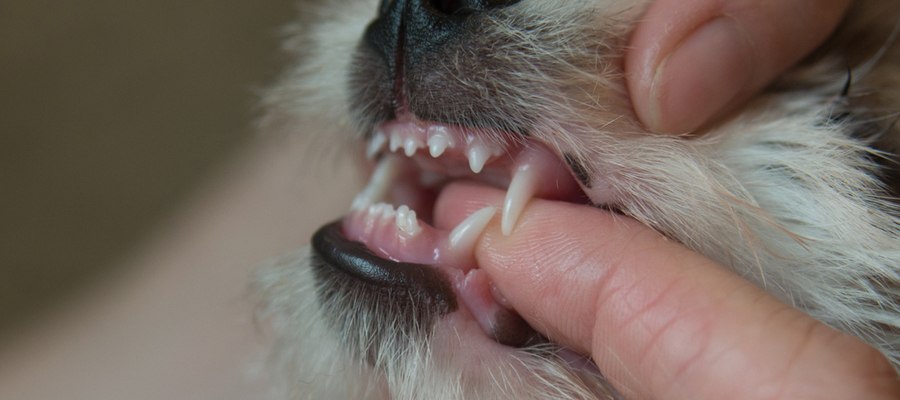Your dog or cat’s bad breath is more than just unpleasant, it’s a sign that your furry family member could be suffering from infection (gingivitis, abscess, and/or periodontal disease). Dental infections can be painful, stressful on the organs and immune system, and eventually lead to tooth loss.
A connection has been made between periodontal disease and heart disease, liver disease, and other organ damage in pets as well as humans.
Why Full Mouth X-rays Are Needed
Dental radiographs (x-rays) are your pet’s voice. Since dogs and cats can’t talk, they can’t tell us if they have a painful or infected tooth. Dental radiographs talk for our pet, telling us which teeth are bad and how to fix them. 40% of dental disease is under the gum line, undetected by the naked eye. If we were to do a dental cleaning on a pet without x-rays, or even with partial x-rays, we would miss almost half of the dental diseases (i.e. periodontal diseases, decay, abscesses, root fractures, etc.) that a pet could be suffering from. This isn’t fair to the pet or the owner’s pocketbook. It’s not right to pay for a dental procedure and still go home with a pet suffering from dental disease. The IPH team takes this very seriously.
How do I know if my pet needs a dental cleaning?
Notice we don’t say “annual” cleanings. We don’t recommend annual cleanings. We recommend cleanings when your pet needs it, which means there are criteria that have to be met. Pet owners that do proper home care (daily teeth brushing) may not need the professional teeth cleaned as often as those that don’t.
It is impossible to know what is happening under the gum line without dental radiographs, which requires anesthesia. Because we don’t want to put pets under anesthesia just to find out if they need a dental cleaning or not, we use the Calculus (calcified plaque) Index Score to help us decide the best time to do a dental cleaning.
The Calculus Index Score is a grading scale of how much calculus there is on the teeth with subsequent gingivitis. The Calculus Index Score has three stages. Actually, four stages, but we’ll skip stage zero (which is clean teeth and the gums and gum line are healthy).
The Three Stages of Calculus grading.
-
Stage 1: Scattered calculus (also known as calcified plaque) covers less than one-third of the tooth but not on the gum line. The gums are pink and healthy.
-
Stage 2: Calculus covers between one-third and two-thirds of the tooth and is on the gum line. The gums are inflamed with gingivitis.
-
Stage 3: Calculus covers more than two-thirds of the tooth and is on the gum line. Your pet most likely has periodontal disease.
Any pet with a Calculus Index Score of Stage 2 or higher needs a professional dental cleaning. Pet owners can check their own pet’s teeth at home to determine if they need a dental cleaning. See pictures to help here.
How can you prevent dental disease?
- Annual dental exams by your veterinarian
- Dental cleanings when the criteria are met (see above)
- Dental Home Care
- Daily Brushing
- Daily Dental Chews (5-10 minutes) everyday
- Water additives
- Dental diets
The rationale of dental home care
Just like when humans eat, whenever your dog or cat chows down on their dinner or snack, bacteria and food particles stick to the tooth. This is called plaque. Obviously, this is not an issue when the teeth are brushed once a day to remove the bacteria. It takes 24-48 hours for plaque to microscopically become tartar. Plaque can be removed from the teeth by brushing, tartar can’t. This is why all dentists (human and veterinary) recommend the teeth be brushed at least once a day. It is also true for dental chews. It has to be daily. When teeth are neglected and not brushed, that plaque becomes hard (calcified), which is called calculus. Eventually, that plaque and calculus will move up under the gum line causing gingivitis and periodontal disease.
If you’re looking for tips on how to start Fido or Fluffy on a good brushing schedule, check out our blog on brushing your dog’s teeth. Getting started is easier than you think!
You can also check out our dog and cat life wellness PDF’s for visual images of the stages of calculus build-up.

